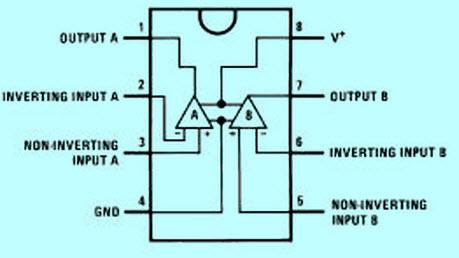
Buku Persamaan Ic Dan Transistor Amplifier Schematic Diagram
This article is a list of various types of amplifier circuits built using Transistors alone.This includes a Class AB amplifier using 4 transistors, then we have a headphone amplifier circuit and finally a low power amplifier using transistor. This article is solely dedicated to publish more transistor amplifier circuits. So you may keep visiting this post in future for more updates. These are circuits that can be used in a lot of low scale applications.
The main feature of these circuits is that they all are just basic designs and the components used can be easily obtained from your junk box. More over the value of the components are not very critical and slight variations in it will not affect the performance. A very simple and easy to build class AB audio amplifier using four transistors is shown here. In class AB operation each output device conducts more than half of the input signal cycle. Up to 78% efficiency is possible with class AB designs and cross over distortion is reduced. The circuit shown here is suitable for small radio receivers, audio players, intercom, telephone etc. Transistor Q1 with its associated components is wired as a pre amplifier stage.
Sep 3, 2018 - Buku Persamaan Ic Dan Transistor Switch Rating: 4,9/5 9091votes. It is used in a variety of analog amplification and switching applications. Feb 18, 2019 - Jan 05, 2016 data ic dan transistor all data semua ic + transitor tv. Obrazec protokola ispitanij silovie transformatori. Of this paper is to present a novel idea that is based on design. The LM358 IC is available in a chip sized package and conventional op-amp circuits, DC.
The audio input is coupled to the base of Q1 through resistor R1 and capacitor C1. Resistor R3 provides collector to base bias for Q1 and C3 is an AC by pass capacitor for the collector resistor R4. Collector to base biasing is a good method of biasing for circuits like this as it provides enough negative feedback, prevents thermal runway and stabilizes the operating point. The second stage is the driver stage for the push pull pair. Q2 with its associated components perform this job. This stage is also collector to base biased and its input is coupled to the output of the preamplifier stage using capacitor C2. Resistor R8 limits the collector current of Q2.The third stage is the class AB push pull section comprising of transistors Q3 and Q4.
Diodes D1 and D2 provides the bias voltage for the push pull stage. The output of the amplifier is coupled to the loud speaker through the capacitor C4. C5 and C6 are power supply filter capacitors. Circuit diagram of 4 transistor amplifier.
4 Transistor Class AB amplifier Notes. • The circuit can be assembled on a vero board. • K1 can be an 8 ohm/5W speaker. • C6 must be grounded near to the Q1 and C5 must be grounded near to the loud speaker ground. This reduces noise. • Use 5V DC for powering the circuit. This is the circuit diagram of a Headphone amplifier operating in the class A push pull mode.
In class A mode the output device (transistors) conduct over the entire input signal cycle. The maximum possible efficiency for Class A operation is 50% and it further reduces when capacitive coupling is used. But the advantages of Class AB amplifier are no cross over distortion, high fidelity and low harmonic distortion. These amplifiers are most suitable for low power applications. In the circuit transistor Q1 works as the preamplifier. Resistors R6 and R7 provides potential divider biasing for Q1.
Audio input is coupled to the base od Q1 through capacitor C2, resistor R9 and POT R10. Emitter of Q1 is coupled to the base of Q2 through resistor R3. Diodes D1 and D2 provides bias voltage for Q2.
Base of Q3 is directly coupled to the collector of Q1. Resistor R5 limits the collector current of Q2 and Q3. C4 and C5 are power supply filter capacitors. Output of the amplifier is coupled to the head phone using the capacitor C3. Circuit diagram of head phone amplifier.